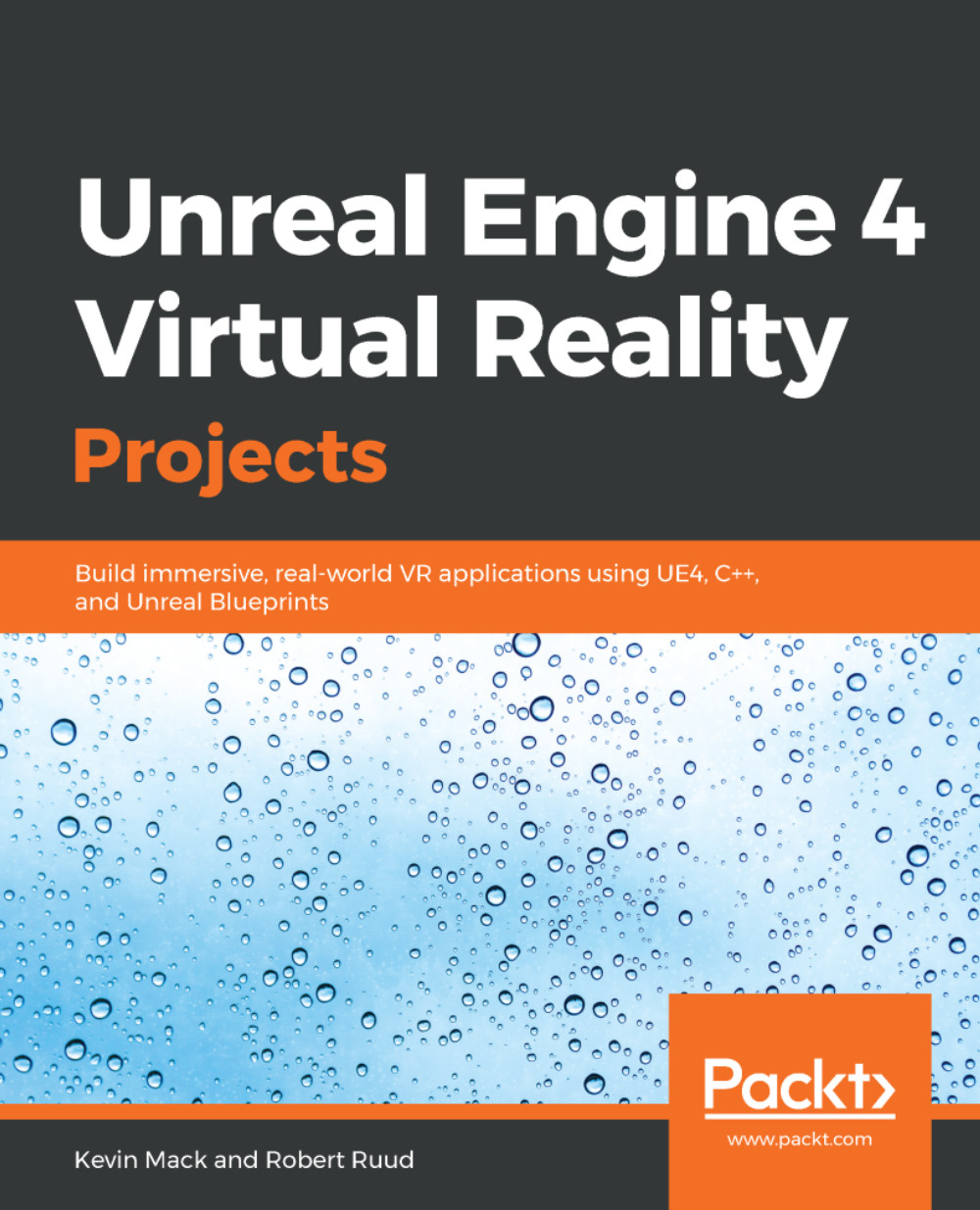That's a strong statement, and it's not obvious if you haven't thought about it before, so I'll say it again—the reality we experience is a construct in our minds, based on highly incomplete data. It generally matches the real world well, which isn't surprising, evolutionarily speaking, but it's not a literal reflection of reality—it's just an inference of the most probable state of the world, given what we know at any one time."
–
–
Welcome to the virtual world. (It's bigger on the inside.)
In this book, we're going to explore the process of creating VR applications, games, and experiences using Unreal Engine 4. We'll spend some time looking at what VR is and what we can do to design effectively for the medium, and then, from there, we'll move on to demonstrate these concepts in depth using the Unreal Engine to craft VR projects that illustrate and explore these techniques and ideas.
Every chapter will revolve around a hands-on project, beginning with basics such as setting up your development environment and creating your first test applications in VR, and moving on from there into increasingly in-depth explorations of what you can do in VR and how you can use Unreal Engine 4 to do it. In each project, we'll walk you through the process of building a project that demonstrates a specific topic in VR and explain the methods used and, in some cases, demonstrate a few alternatives. It's important to us, as you build these projects, that you come away not just knowing how to do the things we describe, but also why we do them this way, so you can use what you've learned as a launchpad to plan and execute your own work.
In this first chapter, we'll look at what VR is and a few of the many ways it's currently used in a wide range of fields. We'll talk about the two most important concepts in VR: immersion and presence, and how understanding what these are and how they work will help you to make better experiences for your users. We'll lay out a collection of best practices for developing immersive and engaging VR experiences, and talk about some of the unique challenges posed by VR development. Finally, we'll pull this knowledge together and dig into a method for planning and executing a VR project's design.
In brief, this chapter is going to take us through the following topics:
- What is virtual reality?
- What can we do in VR?
- Immersion and presence
- Best practices for VR
- Planning your VR project


